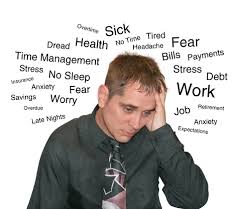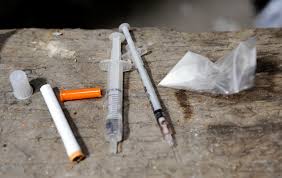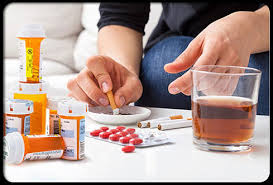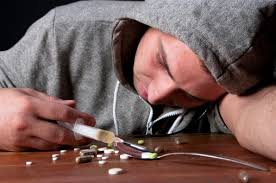
Taking early precaution in managing post acute withdrawal symptoms is the best thing you can do for comfort during treatment
Did you know that failing to effectively take part in managing post-acute withdrawal symptoms is actually promoting the wide spread of alcohol and drug addiction? This is practically true because the less you do to strengthen yourself against an episode of post-acute withdrawal, the weaker your resistance becomes. In other words you will become very vulnerable and may not succeed in your targeted objectives. Doctor Dalal Akoury a veteran addiction expert compares this with a tetanus shot. That is to says that the longer it has been since you have had one, the more risk it is for you becoming seriously ill if you get an accident and cut yourself on a piece of rusty metal. Conditions that put you in high risk of experiencing post-acute withdrawal symptoms are usually lack of care of yourself and lack of attention to your recovery program. If you are going to recover without relapse you need to be aware of stressful situations in your life that can increase your risk of experiencing PAWS and that is where experts from AWAREmed Health and Wellness Resource Center under the able leadership of doctor Dalal Akoury comes in to help. Doctor Akoury is registering that post acute withdrawal symptoms management techniques are very paramount nonetheless it can also be affected by harboring stressful situations in your life. It therefore means that stress management must be done hand in hand with PAWS. Nevertheless we do appreciate the challenges that can be involve and so doctor Akoury suggest that because you may not be able to remove yourself from all stressful situations, it is only fair that you prepare yourself on how to handle them when they occur. This is very important because it is not always the situation that makes you go to down, but your reaction to the situation.
Experts are of the opinion that since stress triggers and deepens the symptoms of post-acute withdrawal adopting some useful stress management skills to control PAWS can be very important. With the help of professionals from AWAREmed Health and Wellness Resource Center, you can learn to identify sources of stress and develop skills in decision making and problem solving to help reduce stress. In that regard proper diet, exercise, regular habits, and positive attitudes all play important parts in controlling PAWS. Besides that relaxation can also be used as a tool to retrain the brain to function properly and to reduce stress.
If you are experiencing post-acute withdrawal symptoms, it is important to bring them under control as soon as possible. Here are some suggestions that may help you be aware of what is going on and help you to interrupt the symptoms before they get out of control.
Sharing with the right people –Sharing is very important, remember that a problem shared is half solved but even as you do this, it is important that you be very selective on who to share with. They must be people of high integrity and those who are not going to accuse, criticize, minimize or cause you to be ridicule. Sharing what you are experiencing will help you look at your situation more realistically. It will help you bring internal symptoms to your conscious awareness. And it will give you support when you need others to rely upon.
Ventilation – Express as much as you can about what you are thinking and feeling even if it seems irrational and unfounded.
Reality testing – Be accountable by ask someone if you are making sense. Not just what you are saying but your actions and behaviors. This is very necessary because your perception of what is happening may be very different from reality.
Problem solving and goal setting – What are you going to do right now about what is going on? You can choose to take action that can change things.
Learning is the endless debt we have and therefore seeking for information about addictive disease, recovery, and post-acute withdrawal symptoms is essential as it will helps in relieving the anxiety, guilt, and confusion that tend to create the stress a factor that intensify PAWS symptoms. As a recovering patient, you need information in order to realize what symptoms are normal during recovery. Besides that you also need to learn management skills so that you can be informed of what to do to put into properly control the stress and the symptoms when they occur. Through retraining you can improve your ability to remember, to concentrate, and to think clearly. Retraining involves practicing certain skills in a safe environment as you build confidence. It includes learning to take things step by step and to handle one thing at a time so that you do not feel overwhelmed in the process. It includes writing down what you want to remember and asking questions when you think that need to have something clarified. Remember that learning about the symptoms of post-acute withdrawal, knowing what to expect, and not overreacting to the symptoms increase the ability to function appropriately and effectively.
When all is said and done, you are responsible for protecting yourself from anything that threatens your sobriety or anything that triggers post-acute withdrawal symptoms. Reducing the stress resulting from and contributing to the symptoms of post-acute withdrawal must be of prime consideration for you. You must learn behavior that will protect you from the stress that might put your sobriety in jeopardy. This self-protective behavior is what will enable you to be firm in accepting your own needs and not allowing other people or situations to push you into reactions that are not in the best interest of your sobriety. In order to protect yourself from unnecessary stress, doctor Akoury is reiterating that you must first identify your own stress triggers, particularly those situations that might bring about an overreaction from you. Then learn to change those situations by either avoid them, change your reactions, or learning how to contain them before they get out of control.
Finally nutrition is also very instrumental in managing post-acute withdrawal symptoms in very many ways. First of all the way you eat has a lot to do with the level of stress you experience and your ability to manage the symptoms of post-acute withdrawal. Poor health normally contributes to stress, and malnutrition contributes to poor health. You may be malnourished because of poor eating habits or because your body is damaged by alcohol or drugs thereby hindering your body from using the nutrients that you consumed effectively. Abstinence from alcohol and drugs is essential as it will bring about some improvement however this alone is not sufficient to rebuild damaged body tissue and maintain good health. New eating habits must be established and practiced regularly and permanently. Your daily diet should contain a well balance diet rich in vegetables, fruit, carbohydrates, proteins, fats, and dairy products. This is an area where you will need a lot of expert’s input and together with the discussed points above, doctor Akoury can be of great help to you if only you can schedule for an appointment with her today.












